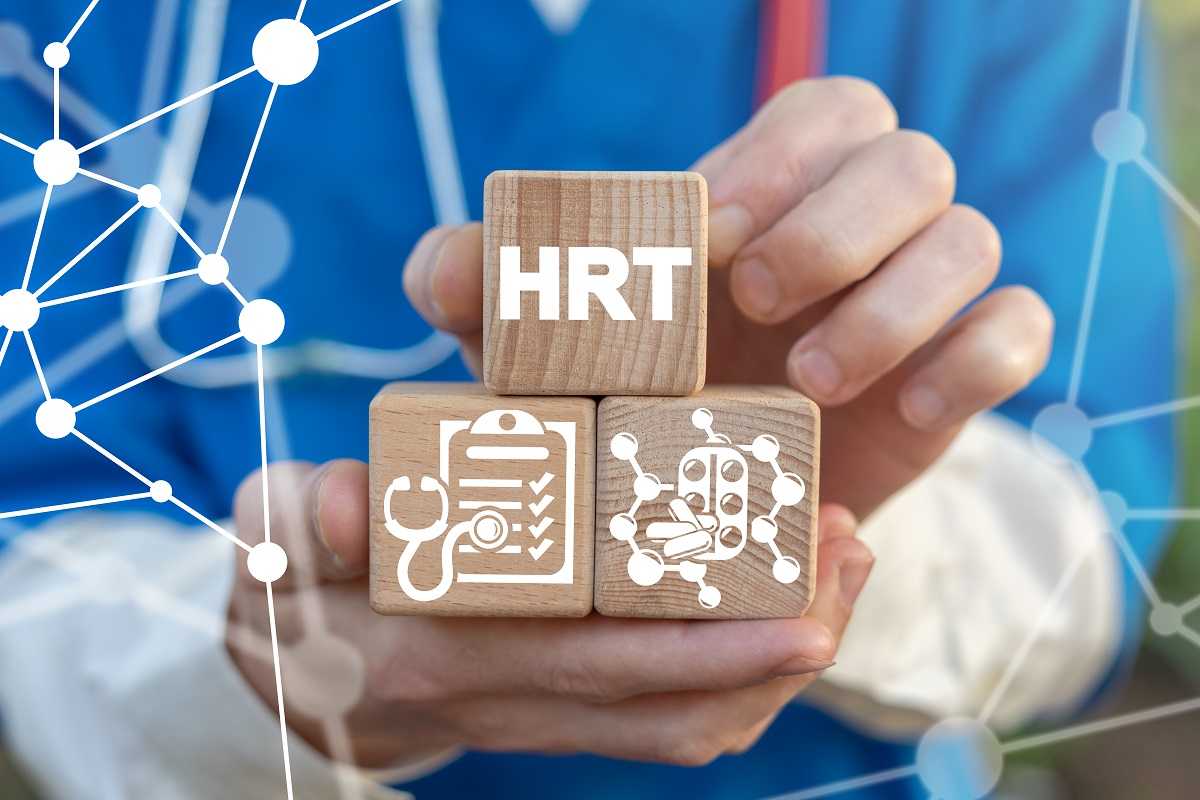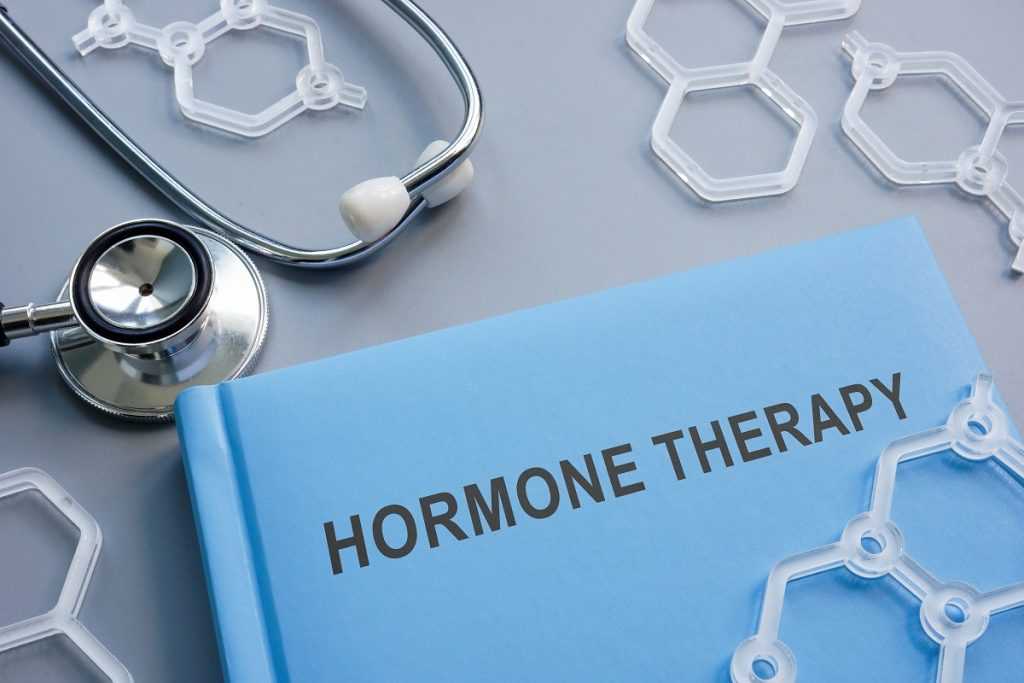Hormones are very critical to the proper functioning of the human body because they coordinate how the different body organs function. They pass signals to the blood, muscles, skin, and other tissues to determine what the body wants to do and when to do it. Bodily processes like metabolism, reproduction, homeostasis, mood, sexual function, and many more are controlled by hormones.
However, as people grow older, there tends to be an imbalance in hormones and how they function. This, among other reasons, is why many opt for hormone replacement therapies to ease the symptoms. This article discusses the types of hormone replacement therapies, how to take them, their benefits, and associated risks.
What is Hormone Replacement Therapy?
Hormone Replacement Therapy (HRT) is a form of hormone therapy used to treat symptoms associated with female menopause. This should not be confused with Testosterone Replacement Therapy (Explore: online trt clinic) which is used to replace androgen in men.
Sexual hormones are important for female reproduction, metabolism, cardiovascular system, and the general well-being of women. But as they reach the stage of menopause, they suffer a loss of function as their estrogen and progesterone levels reduce. This happens notably in the bone, skin, brain, peripheral vessels, connective tissue, and cardiovascular system. It then leads to oxidation, weakened lipid metabolism, high level of cholesterol, and a higher risk of systemic disorders. This necessitates the application of HRT with progestins and estrogens.
HRT is mostly used to treat women in menopause as it is believed to improve their cardiovascular health, prevent osteoporosis, and help them live longer and healthier lives. It generally helps them to ease menopausal symptoms, fractures, and hot flashes. It involves taking either estrogen and progestogen (combined HRT) or only estrogen (estrogen-only HRT).
Testosterone Replacement Therapy (TRT)
Testosterone is a major sex hormone in men that helps them to control their muscle and bone mass, fertility, fat distribution, and improve their body hair growth, as well as other male reproductive tissues like the testes and prostate. Inadequate levels of testosterone can result in symptoms like erectile dysfunction, and a reduction in sex drive and bone mass. Thus, TRT is used to alleviate these symptoms.
Testosterone Replacement Therapy (TRT) is also known as androgen replacement therapy. It is a remedial process used in treating men with low testosterone levels, mostly caused by hypogonadism or aging. Hypogonadism is a clinical condition where the sex glands produce minimal sex hormones, thereby limiting the ability to produce sufficient volumes of testosterone. It is associated with symptoms like diminished libido and sense of vitality, reduction in muscle mass and bone density, depression, and anemia. Aging is also a responsible factor because the level of one’s testosterone begins to decline gradually at the age of 30 or 40, after peaking during the adolescence stage.
Types of Hormone Replacement Therapy
The two main hormones used in HRT are estrogen and progesterone.
-
Estrogen:
There are three types of estrogen that the body produces and can be supplemented. The first is Estrone (E1), and it is mainly produced in fat tissue. It is the major type of estrogen found in the body after menopause. The second is Estradiol (E2) which is the strongest estrogen found in the body before menopause. It is produced in the ovaries and drastically reduces after menopause. The third is Estriol (E3). It is the weakest form of estrogen and is found in the body, majorly during pregnancy.
Where a woman has symptoms of menopause after surgical removal of the uterus (hysterectomy) or a surgical removal of the uterus, ovaries, and fallopian tubes (hysterectomy with bilateral salpingoophorectomy), a low dose of estrogen may be recommended.
- Estrogen pill: Pills are the most popular form of treatment for symptoms of menopause. Some of them include estrogens-bazedoxifene (Duavee) or conjugated estrogens (Cenestin, Estrace, Estratab, Femtrace, Ogen, and Premarin). While many estrogen pills are usually taken once a day without food, others have more complex dosing arrangements. However, doctors’ prescriptions are very helpful in this case.
- Estrogen patch: This kind of patch is usually worn over the skin of the abdomen and might require replacement every few days or last for up to a week, depending on the kind of patch. They include Alora, Estraderm, Climara, Vivelle-Dot, etc. One could also use a combination of estrogen and progestin patches such as Combipatch and Climara Pro. Menostar has a lower dose of estrogen compared to others, it is only used for lowering the danger of osteoporosis.
- Topical Estrogen: This kind of treatment involves absorbing estrogen directly into the bloodstream. It has to do with the use of creams, gels and sprays to put estrogen in the system. Some examples of the gels are Divigel and Estrogel, while the sprays include types like Evamist. An example of the cream is Estrasorb. The exact ways on how to apply these treatments vary, but they are usually used once in a day.
- Vaginal Estrogen: This kind of treatment is particularly for women who suffer from vaginal dryness, itchiness, burning, or pain while having intercourse. It is made in the form of vaginal ring, cream, or vaginal estrogen tablets. Examples of tablets are Vagifem; creams include Premarin and Estrace, while insertabloe rings include Femring and Estring. While vagina rings are supposed to be replaced every three months, the dosing schedules for these treatments differ.
-
Progesterone:
This HRT is usually called a combination therapy because it combines doses of estrogen and progestin (the synthetic form of progesterone). It is usually used to treat women who still have their uterus and reduces the risk of endometrial cancer.
- Oral Progestin: This is taken in form of pill and includes medroxyprogesterone acetate like Provera, and synthetic progestin pills like norethindrone and norgestrel. Many patients with menopause are now treated with natural progesterone as it might have more advantages, instead of the synthetic option.
- Intrauterine Progestin: Intrauterine devices with low dose and levonogestrel are sold under specified brands and are usually used for pregnancy prevention and bleeding control. They are sometimes used alongside estrogen too.
Benefits of Hormone Replacement Therapy
HRT majorly helps to mitigate the symptoms of menopause such as hot flashes, mood swings, vaginal dryness, night sweat, reduced sex drive. It also decreases the risk of hip fracture and heart diseases. Associated risks include breast cancer, blood clots, heart disease, nausea, bloating, and strokes.
Types of Testosterone Replacement Therapy
TRT aims at returning hormone levels to the average range for young adults. It includes tablets, injections (online testosterone injections), oral, pellets, etc.
- Oral: This includes the oral form of 17-alpha-alkylated androgen, although with potential liver toxicity effect. It also includes methyltestosterone and fluoxymesterone. Testosterone undecanoate, which is absorbed majorly through the lymphatic system is also wide used.
- Intramuscular Injection: Testosterone enanthate and testosterone cypionate are given as esterified oil-soluble preparation for injection. A regular dose is 100mg per week, or 200 to 300 mg in two to three weeks. Serum levels reach a highpoint 2 to 5 days after injection, and returns to the base line 10 to 14 days after injection.
- Transdermal Testosterone: This is available either in scrotal or non-scrotal patch or as a gel preparation. It is required to be applied daily and is made to give 5 to 10 mg of testosterone every day.
- Sublingual and Buccal: This form of testosterone involves cyclodextrin-complexed testosterone sublingual mixture, which is absorbed rapidly into circulation as testosterone is released from the cyclodextrin shell. It also has a good therapeutic potential.
Benefits of Testosterone Replacement Therapy
It helps to restore the testosterone level in the body to the normal range and can help ease the effects of hypogonadism. It brings about improved sexual desire and performance, and helps to tackle erectile dysfunction. TRT has an overall effect on one’s mood, energy level and general well-being. It also boosts lean body and muscle mass.
Associated risks include prostrate cancer, infertility, skin diseases, liver toxicity and tumor, benign prostatic hypertrophy, congestive heart failure, and gynecomastia.
Alternatives
A good alternative to hormone replacement therapy is the Bioidentical Hormone Replacement Therapy (BHRT). It is a natural solution and a manmade hormone made from plant estrogens chemically identical to the ones the human body produces. It also comes in pills, patches, gels, creams, and injections. It is used to increase hormone levels that have been reduced in both men and women. It also helps to cure symptoms of menopause like night sweats, hot flushes, mood change, memory loss, etc. Other alternatives include lifestyle measures like regular exercise and healthy dieting, tibolone, antidepressants, clonidine, and other complementary therapies.
Conclusion
Hormone Replacement Therapy (HRT) has a host of advantages if well utilized. It helps to solve cardiovascular complications, improves hormonal levels, eases the symptoms of menopause, and improves overall wellbeing. However, it can also result in some side effects and risks based on the duration and how it is used. This is why it is so important to first talk to your doctor. After you talk to your doctor, it is essential to follow your doctor’s prescription when engaging in HRT.
Schedule a consultation with our board-certified specialists at HRT Doctors Group to discuss the benefits, risks, and personalized approach to HRT. Together, we’ll create a tailored treatment plan for your optimal well-being. Contact us today!
Questions and Answers
The main types of HRT are estrogen-only therapy, combined estrogen-progestin therapy, and bioidentical hormone replacement therapy.
Estrogen-only HRT is typically prescribed for women who have had a hysterectomy, as they no longer require progesterone to protect the uterine lining.
Combined HRT is used to prevent endometrial hyperplasia and uterine cancer, which can be caused by unopposed estrogen.
Bioidentical hormones are chemically identical to the hormones produced by the body, often derived from plant sources like soy or yam, and are used in customized HRT treatments.
HRT can be delivered via oral tablets, transdermal patches, gels, creams, vaginal rings, injections, or implants.
Systemic HRT involves taking hormones that circulate through the bloodstream to address widespread menopausal symptoms like hot flashes and night sweats.
Localized HRT, such as vaginal creams or rings, delivers hormones directly to the vaginal area and is primarily used for symptoms like vaginal dryness or discomfort during intercourse.
Cyclical HRT is designed for women who are still experiencing periods, and it mimics the natural menstrual cycle by alternating estrogen and progestin phases.
Continuous combined HRT involves taking both estrogen and progestin daily without breaks, and is typically recommended for postmenopausal women.
Testosterone therapy may be included in HRT for women to address symptoms like low libido and fatigue, especially when levels are deficient.

